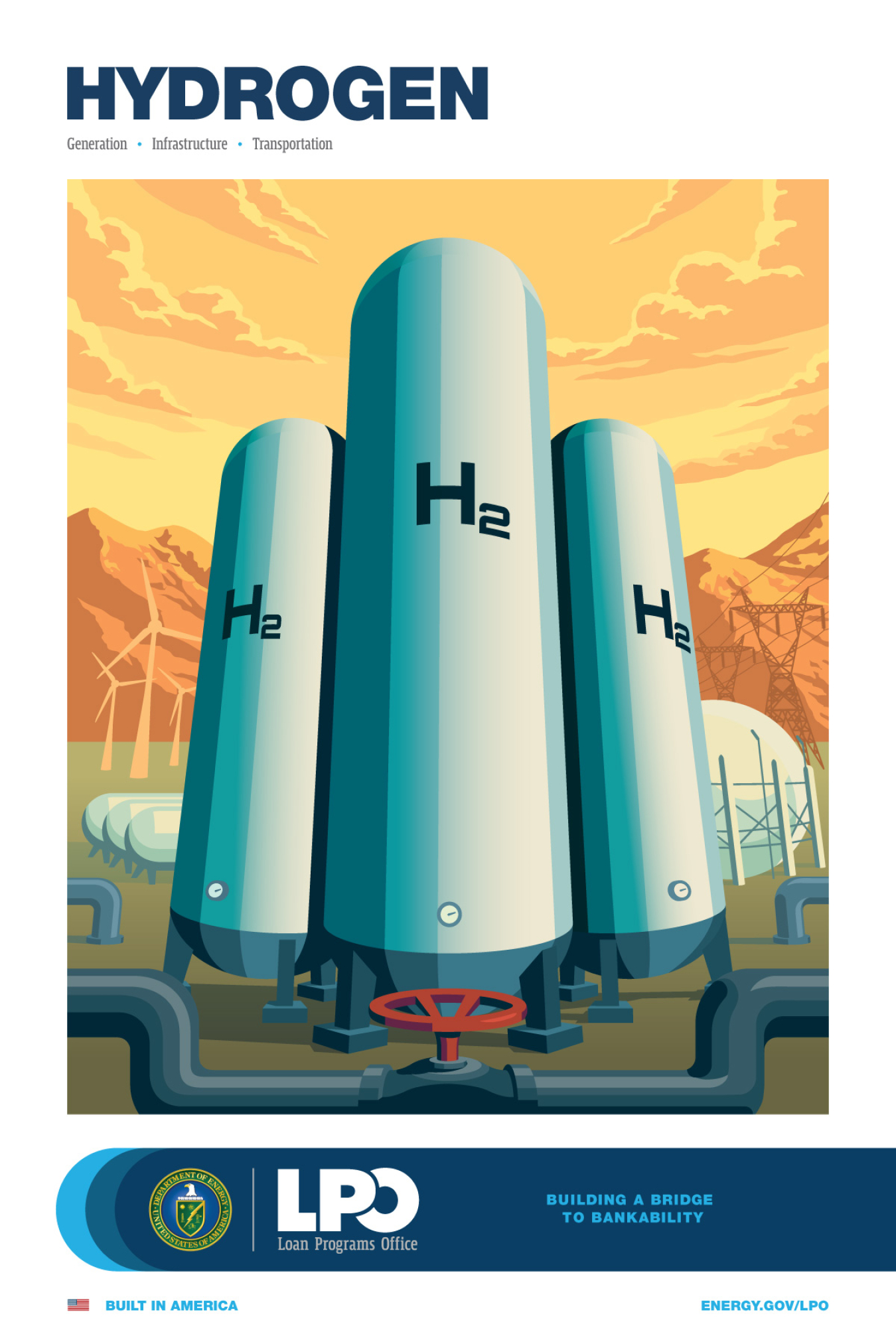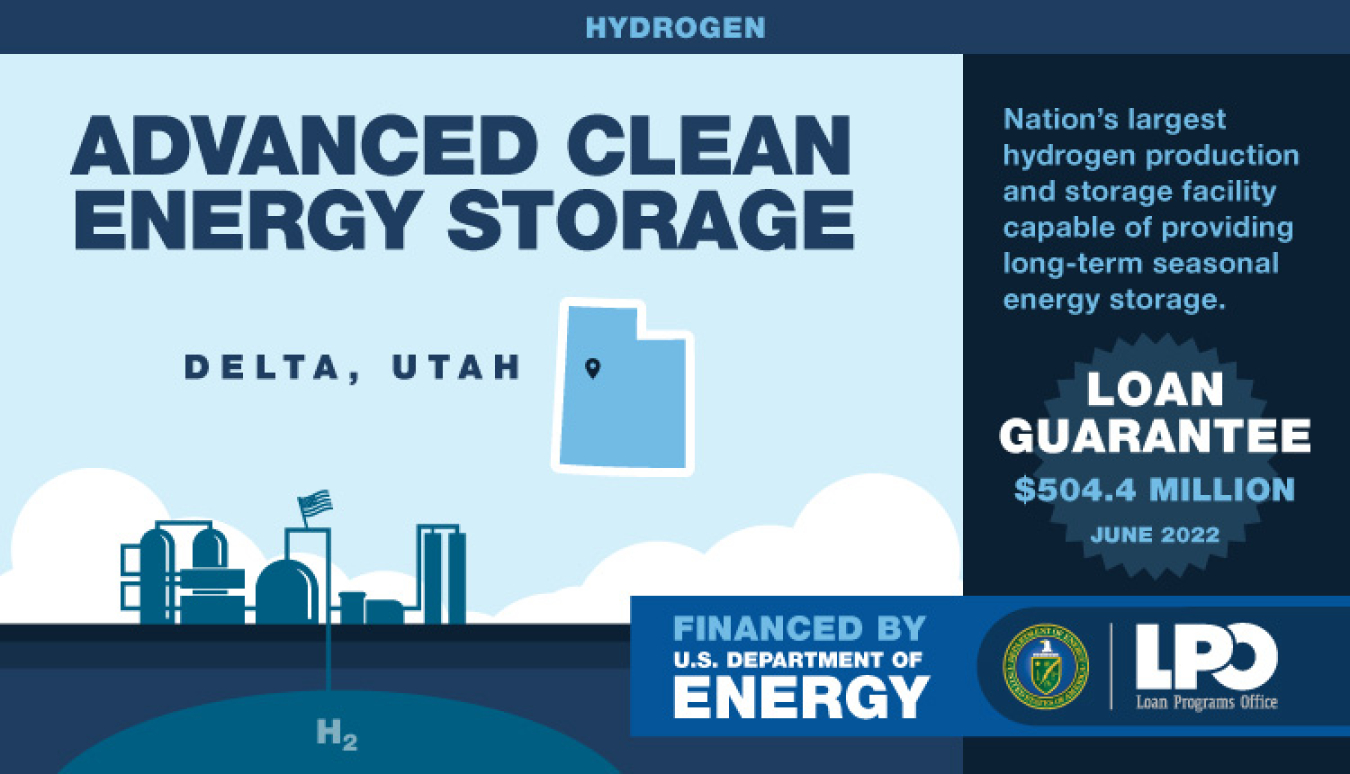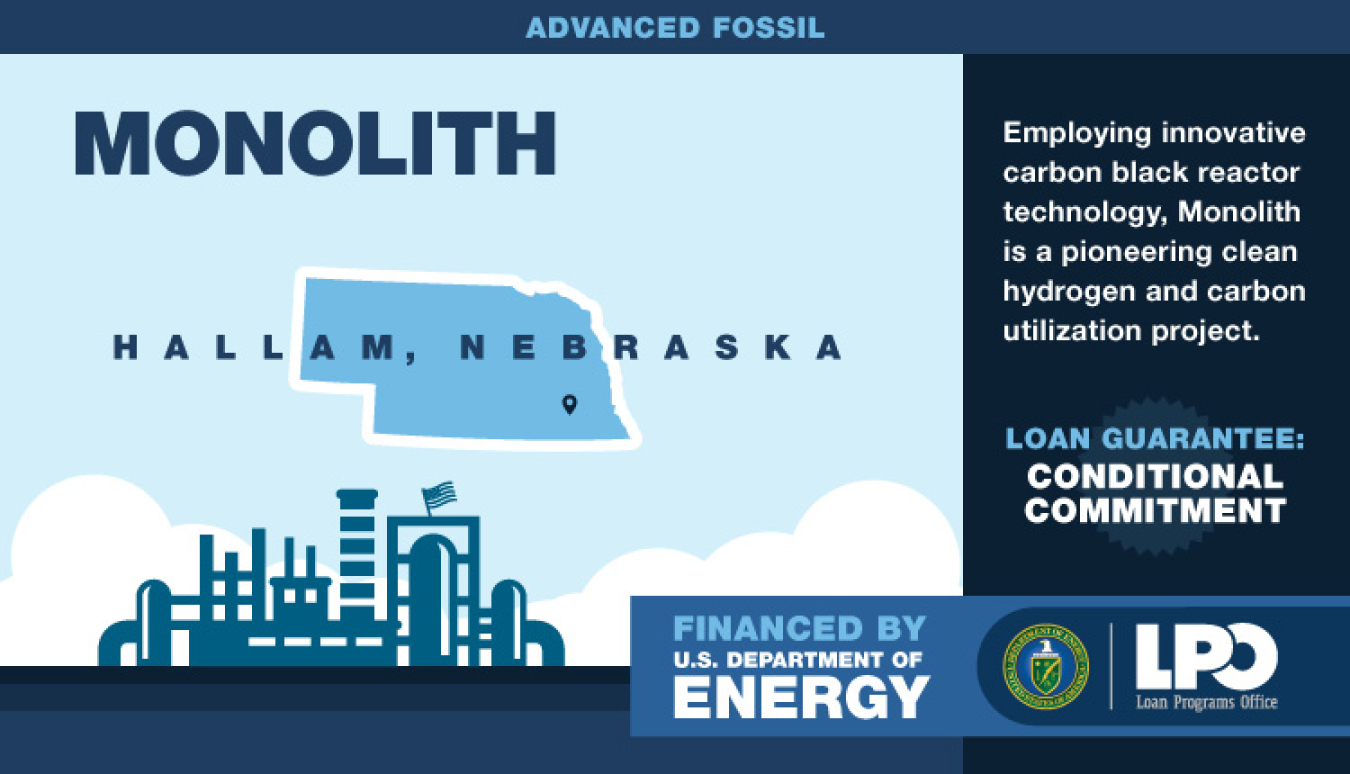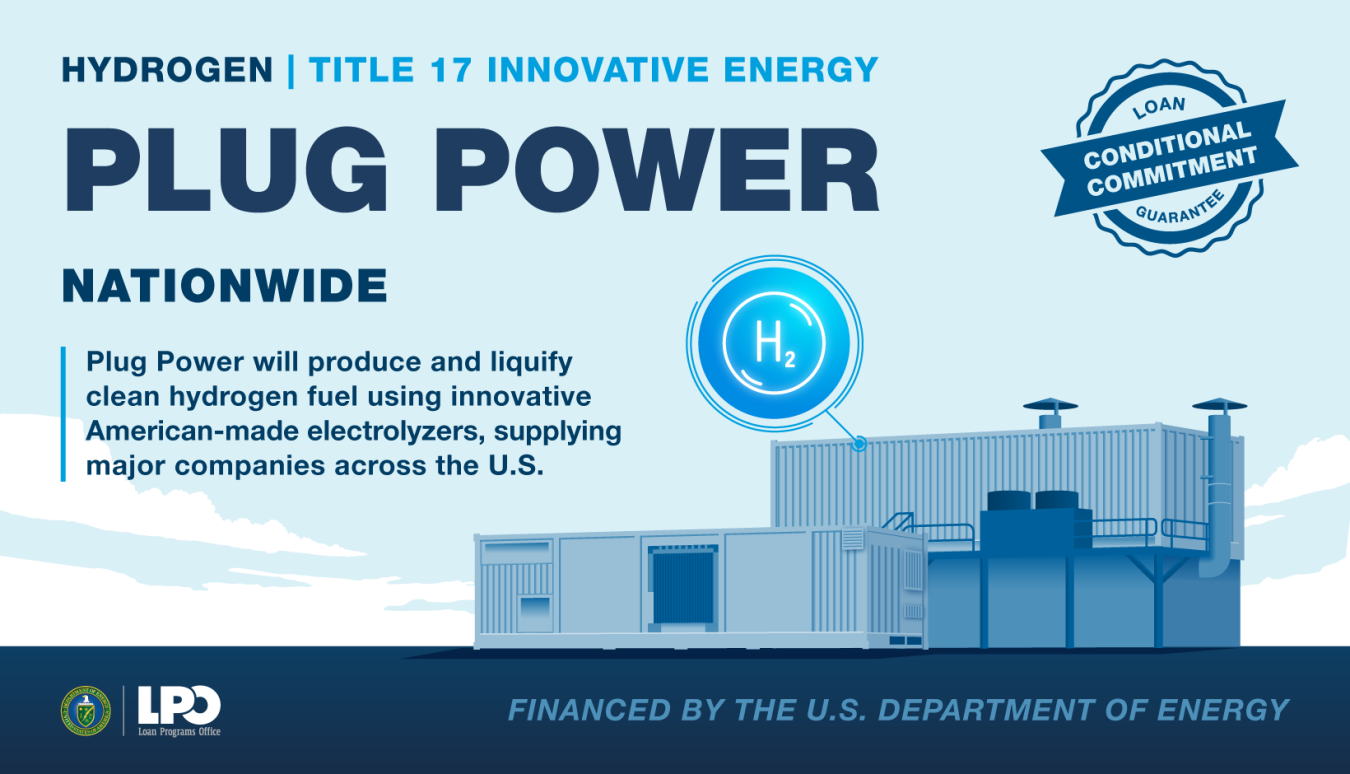Jigar Shah, Director of the Loan Programs Office, dives into how the DOE Loan Programs Office (LPO) is supporting U.S. clean hydrogen projects in line with the Biden Administration’s clean energy goals.
July 29, 2024
Download LPO's Hydrogen poster.
In this post, I’m diving into how the DOE Loan Programs Office (LPO) is supporting U.S. clean hydrogen projects.
To meet President Biden’s goals to achieve a clean grid by 2035 and reach net zero emissions economy-wide by 2050, an array of decarbonization technologies — including clean hydrogen — will play a critical role. This is particularly true in difficult-to-decarbonize industrial and chemical processes like ammonia production and oil refining, as well as transportation use cases such as heavy-duty trucking and aviation fuels. DOE’s Hydrogen Shot has set the goal of reducing the cost of clean hydrogen by 80% to $1 per 1 kilogram by the end of the decade.
As we describe in our LPO Tech Talk on Clean Hydrogen, the clean hydrogen sector includes low carbon intensity production, either through electrolysis using carbon-free electricity like nuclear, wind, or solar; or by steam reforming natural gas, biomass, waste coal, or other materials and capturing and storing or utilizing the carbon. The DOE National Clean Hydrogen Strategy and Roadmap provides a snapshot of hydrogen production, transport, storage, and use in the United States today and explores the potential for clean hydrogen to contribute to national goals across multiple sectors, with strategic opportunities for 10 million metric tonnes annually (MMTpa) of clean hydrogen by 2030, 20 MMTpa by 2040, and 50 MMTpa by 2050. Using clean hydrogen can reduce U.S. emission approximately 10 percent by 2050 relative to 2005.
The Department recently highlighted the opportunities and challenges associated with scaling the clean hydrogen economy (for both private and public sector capital allocators) in the launch of its Pathways to Commercial Liftoff reports. The reports emphasize that the United States clean hydrogen market is poised for rapid growth: Project announcements are accelerating, and investors are actively engaged, partly because of new policy tools like H2 Hub funding, the hydrogen production tax credit (PTC), the carbon sequestration credit (45Q), and decarbonization goals across the public/private sectors. Taken together, these incentives and policies will kick-start the transition from high carbon intensity to low carbon intensity hydrogen in sectors that already use H2 today, and they will make it possible for more nascent segments (e.g., transportation use cases, seasonal energy storage) to scale-up.
But, like all clean energy technologies, challenges remain if we want to see the clean hydrogen economy accelerate. As the Clean Hydrogen Liftoff report attests, hydrogen is a complicated value chain: We need to bring down production costs, scale midstream infrastructure, and secure long-term offtake. In production, the opportunity is large. We have the opportunity to scale from 0 MMTpa of clean H2 production today to 10 MMTpa in 2030 and 50 MMTpa in 2050. For midstream infrastructure, the industry faces high costs and limited value chains from a single producer to a couple of offtakers. And in end use, long-term offtake agreements can help derisk projects for private sector investors. These and other issues are broken down in the Clean Hydrogen Liftoff report, which will be updated regularly as the sector evolves and additional industry feedback is incorporated in this analysis.
Moreover, as part of President Biden’s Investing in America agenda, DOE announced $7 billion to launch seven Regional Clean Hydrogen Hubs (H2Hubs) across the nation and accelerate the commercial-scale deployment of low-cost, clean hydrogen.
DOE’s Office of Clean Energy Demonstrations (OCED) manages the H2Hubs program and will provide project management oversight for the projects selected to produce clean hydrogen; demonstrate end uses; generate training opportunities and good-paying, high-quality jobs; reduce emissions and pollution; and ensure tangible benefits flow to local Hub communities. Learn more about the seven H2Hubs selected for award negotiations here.
Also, in the last year LPO has closed its first loan to a clean hydrogen project, to Advanced Clean Energy Storage, in Title 17 Clean Energy Finance Program. Through Title 17, LPO can finance a variety of production and storage projects, including clean hydrogen production facilities (e.g., clean electricity plus electrolyzers) and storage facilities (e.g., salt caverns).
LPO also can support other projects across the clean hydrogen supply chain, including through the Advanced Technology Vehicles Manufacturing Loan Program. These include direct use in fuel cell-powered advanced technology vehicles, like heavy-duty vehicles; and through indirect use via synthetic fuels, like in sustainable aviation fuel (SAF) or maritime fuels.
LPO is uniquely situated to help support key parts of the clean hydrogen value chain in order to reach our decarbonization goals. As of the end of March 2023, requested financing from LPO for hydrogen sector-based projects via active loan applications totaled over $3.5 billion. For more current details, view LPO’s Monthly Application Activity Report, which explains the level of interest from applicants for LPO financing and what technology sectors have been most actively engaged with LPO.

CLEAN HYDROGEN – ADVANCED CLEAN ENERGY STORAGE
In June 2022, DOE announced it closed on a $504.4 million loan guarantee to the Advanced Clean Energy Storage project in Delta, Utah — marking the first loan guarantee for a new clean energy technology project from DOE’s Loan Programs Office (LPO) since 2014. The loan guarantee will help finance construction of the largest clean hydrogen storage facility in the world, capable of providing long-term low-cost, seasonal energy storage, furthering grid stability. The project is expected to create up to 400 construction and 25 operations jobs, advancing President Biden’s climate and clean energy deployment goal of net zero emissions by 2050.

ADVANCED FOSSIL – MONOLITH MATERIALS
In December 2021, LPO announced a conditional commitment for a loan guarantee to Monolith™ Inc. (formerly Monolith Nebraska, LLC). Monolith uses renewable energy to separate natural gas into its elemental components, hydrogen and carbon, for use in difficult-to-decarbonize industrial processes. The hydrogen can be burned as-is for fuel or converted to ammonia for fertilizer, and the carbon is used in clean carbon black for tires and other products. Monolith’s existing turquoise hydrogen production already displaces carbon emissions, and the planned facility expansion, for which LPO has conditionally offered the loan guarantee, will allow the company to produce clean hydrogen at an even larger scale

CLEAN HYDROGEN – PLUG POWER
In May 2024, LPO announced a conditional commitment for a loan guarantee of up to $1.66 billion to Plug Power Energy Loan Borrower, LLC (a subsidiary of Plug Power Inc.). Plug Power is among the leading commercial-scale manufacturers of electrolyzers in the United States. The loan guarantee will help finance the construction of up to six facilities across several states to produce clean hydrogen through electrolysis. Plug Power’s Proton Exchange Membrane (PEM) technology allows it to operate efficiently even with variable electricity, enabling it to leverage electricity from intermittent renewables.
The hydrogen fuel from the project is expected to power fuel cell-electric vehicles used in the material handling, transportation, and industrial sectors. As a result, LPO estimates greenhouse gas emissions will be reduced by 84% compared to conventional hydrogen production, which derives hydrogen from natural gas (CH4) and ultimately produces carbon dioxide (CO2). The project will support an estimated 100 to 300 jobs during the construction period and at least 50 full-time jobs for each facility.
Clean Hydrogen News Roundup
- Pathways to Commercial Liftoff: Fireside Chat and Clean Hydrogen Deep-Dive (DOE webinar)
- Biden’s Grand Energy Plan Is Finally Getting Real (Heatmap News)
- U.S. green hydrogen hub will put long-haul energy storage to the test (Canary Media)
- U.S. Federal Government and the Hydrogen Economy 2021 | Insights (Holland & Knight)
- Massive green hydrogen hub in Utah wins $504M federal loan guarantee (Canary Media)
- Jigar Shah Talks About $504 Million Hydrogen Facility, Small Nuclear, & US Challenges (Clean Technica)
- US offers conditional $1.66 billion loan to hydrogen producer Plug Power (Reuters)
This blog was originally published on April 14, 2023, and is periodically updated.
Jigar Shah

Former Director, Loan Programs Office
Jigar Shah served as Director of the Loan Programs Office (LPO) at the U.S. Department of Energy (DOE) from March 2021 to January 2025. He led and directed LPO’s loan authority to support deployment of innovative clean energy, advanced transportation, and Tribal energy projects in the United States. Prior, Shah was co-founder and President at Generate Capital, where he focused on helping entrepreneurs accelerate decarbonization solutions through the use of low-cost infrastructure-as-a service financing. Prior to Generate Capital, Shah founded SunEdison, a company that pioneered “pay as you save” solar financing. After SunEdison, Shah served as the founding CEO of the Carbon War Room, a global non-profit founded by Sir Richard Branson and Virgin Unite to help entrepreneurs address climate change.
Shah was also featured in TIME's list of the "100 Most Influential People" in 2024.
Originally from Illinois, Shah holds a B.S. from the University of Illinois-UC and an MBA from the University of Maryland College Park.

